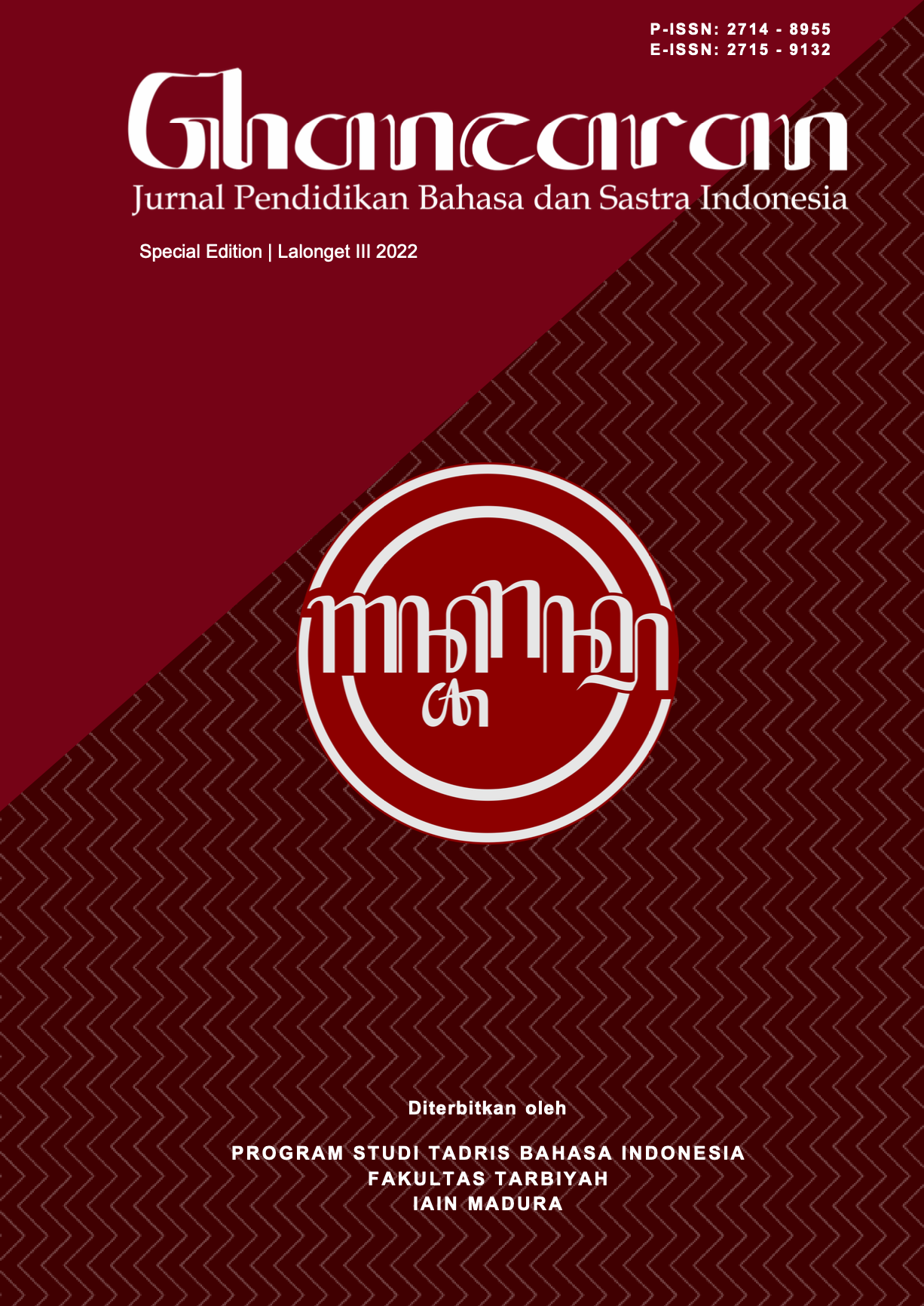Penggunaan Media Pembelajaran Berbasis Wordwall di Era Merdeka Belajar untuk Meningkatkan Minat Belajar Siswa SD
 Abstract views: 1925
,
Abstract views: 1925
,
 PDF downloads: 1997
PDF downloads: 1997
Abstract
One of the most important things in learning is the use of appropriate media. The right media can affect student learning success. However, it has so far been neglected by many teachers/professionals. The research objective is to increase students' interest in learning through Wordwall-based media. This study uses Classroom Action Research (CAR). The data source for this research were 26 grade V students at SDN Turi II Tambakrejo. The results of the study show that learning with Wordwall-based media can increase students' interest in learning. This increase can be seen in student learning outcomes in the preliminary study an average of 56,3. Meanwhile, in Cycle I, it was 72,3 and the average in Cycle II was 83,15. In addition, there are also observations on the proportion of nine indicators of student interest in learning. Students who are developing quite well (BCB) and students who are developing very well (BSB) experience an increase in the percentage of preliminary studies of only 59% when given Classroom Action Research, an increase of 77% in cycle I, while in cycle II it reaches 90%. The conclusion is that using Wordwall-based media can increase student learning interest. Therefore, it is hoped that teachers/educators will try to implement a Wordwall-based learning environment to increase students' interest in learning at school.
Downloads
References
Arikunto, S., Supardi, & Suhardjono. (2021). Penelitian Tindakan Kelas: Edisi Revisi. Bumi Aksara.
Aqib, Z. (2007). Penelitian Tindakan Kelas. Bandung: CV Yrama Widya.
Farhaniah, Siti. (2021). Penerapan Media Berbasis Wordwall untuk Meningkatkan Keaktifan Belajar Siswa Pada Pembelajaran Tematik Kelas V Sekolah Dasar Negeri 127 Kota Jambi. UIN Sulthan Thaha Saifuddin Jambi.
Galuh, Tatsa Pradani. (2022). Penggunaan Media Pembelajaran Wordwall Untuk Meningkatkan Minat Dan Motivasi Belajar Siswa Pada Pembelajaran IPA Di Sekolah Dasar. Educenter: Jurnal Ilmiah Pendidikan. 1(5).
Kristiawan, M. (2014). A Model for Upgrading Teachers’ Competence on Operating Computer as Assistant of Instruction. The Global Journal of Human-Social Science (GJHSS), 14, 43.
Launin, Shofiya, Wahyu Nugroho dan Angga Setiawan. (2022). Pengaruh Media Game Online Wordwall Untuk Meningkatkan Minat Belajar Siswa Kelas IV. JUPEIS : Jurnal Pendidikan dan Ilmu Sosial. 1(3).
Magdalena,Ina.Dkk.(2021).Pentingnya Media Pembelajaran Untuk Meningkatkan Minat Belajar Siswa SDN Merayu Selatan 06 Pagi. Jurnal Edukasi dan Sains. 3(2).
Nurindah & Kasman. (2021). Implementasi Media Pembelajaran Berbasis Android Terhadap Hasil Belajar Bahasa Indonesia. Jurnal Teknologi Pendidikan. 10(1).
Ricardo, Meilani, R.I. (2017) Impak Minat dan Motivasi Belajar Terhadap Hasil Belajar Siswa. Jurnal Pendidikan Management Perkantoran, 2 (2), 188-201.
Savira, Annisa & Rudy Gunawan. 2022. Pengaruh Media Aplikasi Wordwall dalam Meningkatkan Hasil Belajar Mata Pelajaran IPA di Sekolah Dasar. Edukatif: Jurnal Ilmu Pendidikan, .4(4).
Trianto, T. (2010). Model Pembelajaran Terpadu. Jakarta: Bumi Aksara.
Wafiqni, Nafia & Fanny Mestyana Putri. (2021). Efektivitas Penggunaan Aplikasi Wordwall dalam Pembelajaran Daring (Online) Matematika pada Materi Bilangan Cacah Kelas 1. Elementar (Elementary of Tarbiyah): Jurnal Pendidikan Dasar, 1(1), 2021, 68-83.
Warsiman. (2022). Pengembangan Model Kooperatif Tipe STAD (Student Team Achievement Division) dalam Pembelajaran Menyimak. Jurnal Edutama, 9(1), 2022.
Wisnujati, Nugrahini. S. Dkk. (2021). Merdeka Belajar Merdeka Mengajar. Makassar: Yayasan Kita Menulis.
Yunitasari, Ria dan Umi Hanifah. (2020). Pengaruh Pembelajaran Daring terhadap Minat Belajar Siswa pada Masa Covid-19. Jurnal Ilmu Pendidikan, 2 (3), 232-243.
Copyright (c) 2023 GHANCARAN: Jurnal Pendidikan Bahasa dan Sastra Indonesia

This work is licensed under a Creative Commons Attribution-ShareAlike 4.0 International License.
Ghancaran: Jurnal Pendidikan Bahasa dan Sastra Indonesia uses an Open Access Policy under the Creative Commons Attribution-ShareAlike 4.0 International License. Authors publishing in this journal agree to the following terms:
- Ghancaran Journal holds the copyright and grants the journal rights for first publication with the work simultaneously licensed under a

The work is distributed under Creative Commons Attribution-ShareAlike 4.0 International License which allows others to share, copy, and redistribute the material in any media or format and adapt, remix, change, and develop the material even for commercial purposes, as long as it is stated credit and license derivative works under similar terms. - Authors may make additional contractual arrangements for non-exclusive distribution of the journal's published work version.
- Authors are permitted to post their work online (e.g., in institutional repositories or on their websites) before and during submission, as doing so may lead to productive exchange.



















